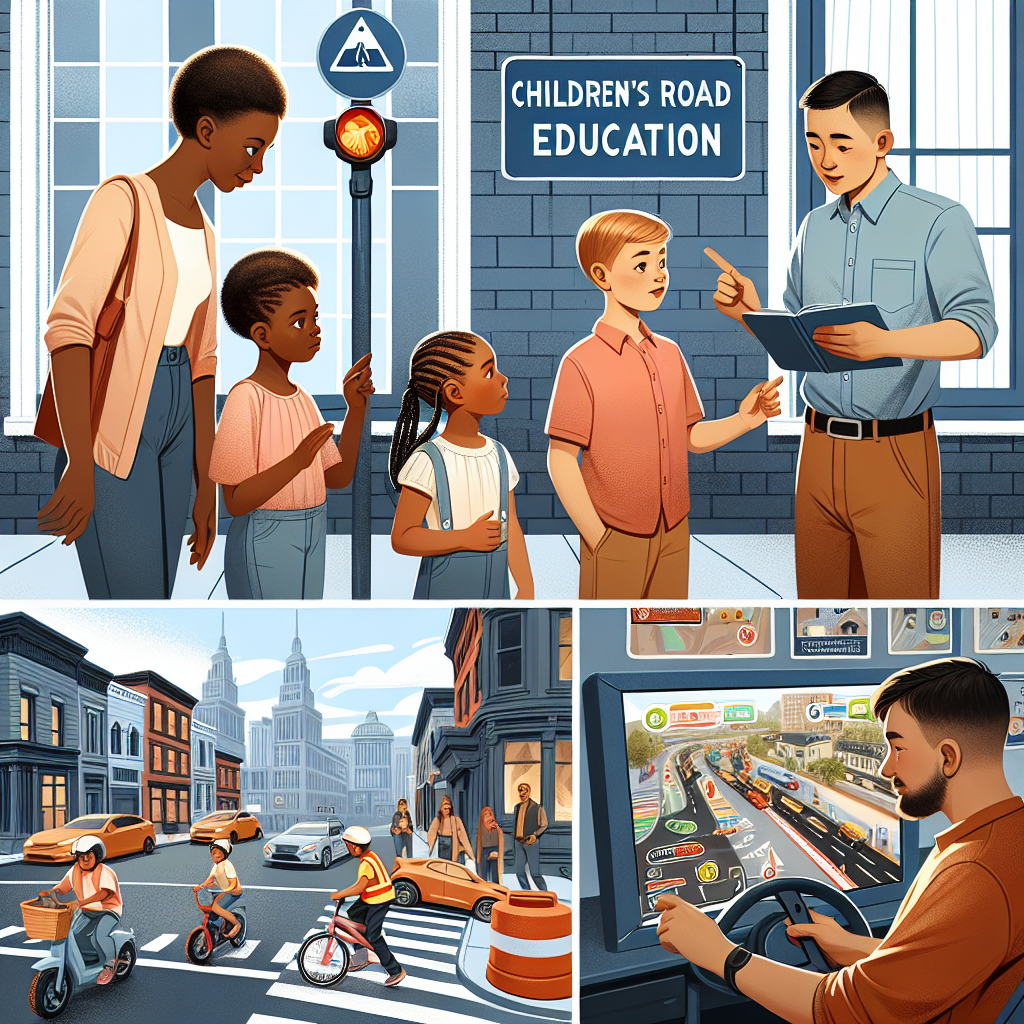Road Education for Children: How to Teach Your Little One to Behave in Traffic
Introduction
Road education for children is an essential aspect in their growth and requires special attention from parents and educators. From an early age, children must be taught how to behave in traffic, whether they are pedestrians, cyclists or future drivers. This article aims to provide a comprehensive guide to the key stages of child development in the context of road education, breaking the process down into easy-to-understand and easy-to-apply steps.
Development of Environmental Perception
Understanding Space
The first step in road education is the development of environmental awareness. Teach your child to be aware of the surrounding space and to observe both vehicles and other pedestrians. Encourage him to notice how things move around him and differentiate between safe spaces and potentially dangerous areas.
Using Educational Games
Use games and activities that simulate traffic situations to show them how to act. There are a multitude of educational games that can help with this, from classic ones such as "red sign, green sign" to modern apps dedicated to road education.
Importance of Traffic Rules
Knowledge of Road Signs and Signals
Another important aspect is knowing road signs and signals. Start with the most familiar signs, such as traffic lights and pedestrian crossings, and explain their meaning. Then move on to more complex signs and specific rules such as priority signs.
The Role of Role Playing Games
Role playing can be an effective method of learning, for example by playing the part of the policeman and the pedestrian or the driver and the passenger. These activities help them understand the responsibilities of each road user.
Motor Development in the Road Context
Learning to Use Scooters and Bicycles
The development of motor skills is essential for a child to be able to practice road education safely. Teach your child to use the scooter and bike correctly and in a way that does not endanger their safety or that of others. Teach them the importance of wearing a helmet and protection.
Practicing Safe Crossing
Crossing the street is one of the most important skills a child needs to learn. Show him how to stop at the edge of the sidewalk, look left and right, and only cross when it's completely safe.
Language Development in Road Education
Learning Effective Communication
Language is a crucial tool for communicating in traffic, whether it's waving to a driver or talking to a police officer. It helps the child to develop a clear and concise language that helps him to make himself understood in various road situations.
Open Safety Discussions
Have open and honest discussions about road safety and the risks we take when we don't follow the rules. These conversations will make children understand the importance of responsible behavior in traffic.
Responsibility of Parents and Educators
Modeling Appropriate Behavior
Parents and educators must be role models for children in all aspects of traffic behavior. If children see adults crossing red lights or not giving way to pedestrians, they will be prone to repeat these behaviors.
Continuing Education and Consolidation
Road education is a continuous process. It is not enough to talk once about the rules of the road and then consider that the little one has learned everything he needs to. It is important to refresh your knowledge and reinforce the rules regularly.
Conclusion
Road education for children is a vital component of their development and requires time, commitment and patience on the part of parents and educators. Through educational games, role-playing, the development of motor skills and communication, as well as through their own example, adults can cultivate healthy traffic behavior habits in children.
We recommend that you continue to explore this vital topic with your child and ensure that he becomes a responsible participant in the road space. For more resources and useful information, visit our road education section of the website or subscribe to our newsletter. Together, we can create a safer environment for all our little treasures!














































































































































